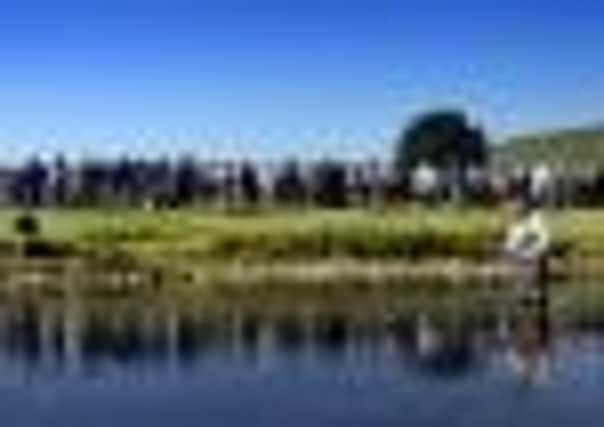Rods which deserve respect go with the grain of tradition


You’ll have to excuse me if I appear a bit tetchy; I was hoping to be out on the rivers of Ryedale on a regular basis in April but casting a fly into a torrent of chocolate can be a bit daunting. There is some talk of grumpiness and bad words bandied about; don’t believe everything that you hear. The upshot though has been more thinking and planning. I like opposites and the unconventional, so I’m of the mind to do some things differently this season. When I do eventually have the opportunity to flick a fly, I shall employ my mousey modern versions of the soft hackled spider patterns.
Usually I would undertake this with a modern, state of the art carbon fibre fly rod that weighs in at less than a whisker.
Advertisement
Hide AdAdvertisement
Hide AdThis year, however I am determined to more regularly take my classic cane rods to the river. They are much heavier than their carbon counterparts but they possess a timeless quality that reflects traditional skills that emerged in the late 1800s. All handmade by gluing together sections of tapered, split bamboo, some of these rods have become classic collectors’ pieces.
It is a salutary realisation that my Hardy CC De France split bamboo rod is worth far more than any of my pristine carbon equivalents.
The design originates from 1911 when JJ Hardy won a prestigious French casting competition; hence the name.
Mine was produced much later, in 1955, but works as well now as it did all those years ago. Whether I can use it to the same effect as dear old JJ is another story.
Advertisement
Hide AdAdvertisement
Hide AdI recall that stalwart of the upper Wharfe, Brent Little, waxing lyrical about the beauty of split cane. He opened my eyes to the reflection of the setting sun from the burnishes, soft golden hues of painstakingly varnished wood.
This is in stark contrast to the brashness of some modern graphite gear. There is even a bright red one out there. He compared the wide arc curvature in the cane creation to the very shape of the limestone fells amidst which we fish. The two forge a harmony of natural elements that eludes the stark intrusion upon the landscape of a modern material.
I will admit that these beautiful fly rods are not easy to use, they demand love and respect. “Treat them gently and they will serve you well”. The words of my dear departed mentor, Hugh Evans, haunt me when I try to force a bamboo rod to flex rather too quickly.
Visitors to Kilnsey Show will have witnessed another of my cane companions in action. I am the proud second owner of a Hardy JJH Triumph built in 1959. The rod is eleven years my junior; it is not for me to say which of the pair has best withstood the ravages of time. You may judge for yourself at this year’s show.
Advertisement
Hide AdAdvertisement
Hide AdIt was bought, in the same year of its creation, by John Dowling. He employed and treasured the Triumph until, when in his nineties, John passed the rod to me. I shall continue to cherish this piece of living history.
I’m off down south next week and I wanted a historic fly to chuck in the chalk streams. Steve came up with the Leckford Professor designed for the job by Ernest Mott.
Mind you, I shall have a few Yorkshire creations in my back pocket!
Flies dressed by Stephen Cheetham. 0113 2507244. www.fishingwithstyle.co.uk
Roger Beck 01439 788483.